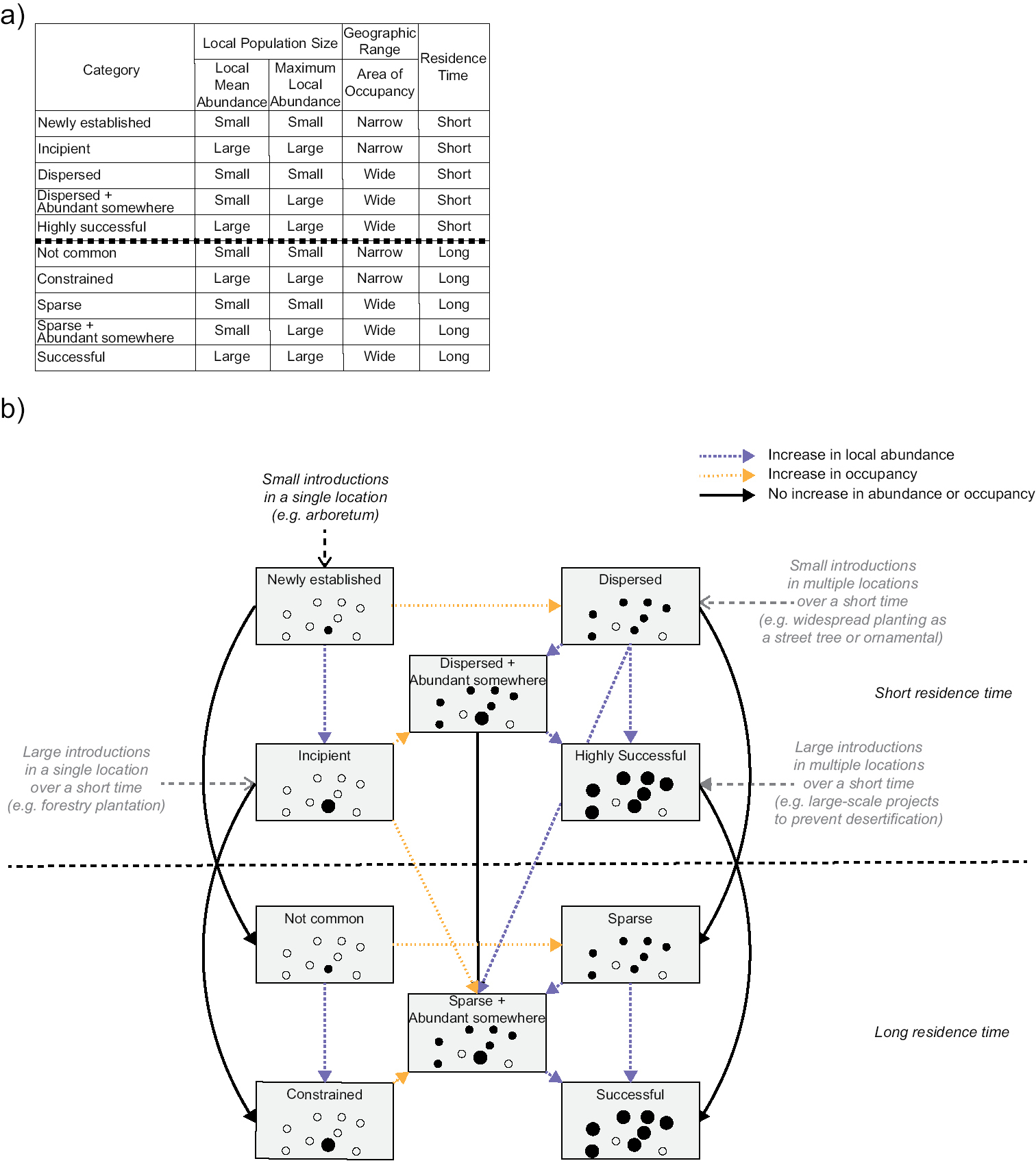
|
||
|
Schematic showing the different trajectories to commonness for alien species described by a typological approach based on ten categories. a For a metapopulation in a network of discrete patches, abundance can be spatially heterogeneous, and both local mean abundance (LMA) and maximum local abundance (MxLA) must be used to capture all the potential trajectories to commonness (see text explanation). Using LMA only to quantify local population size can underestimate the commonness of a metapopulation. This results in the creation of two new categories in addition to the original eight categories from McGeoch and Latombe (2016): ‘Dispersed + abundant somewhere’ and ‘Sparse + abundant somewhere’. b A population can transit from one category to another by increasing its abundance (blue arrows – large circles) or range (yellow arrows) rapidly, or by remaining at similar abundance and range levels over a long period of time (black arrows). When both abundance and range increase rapidly at the same time, some categories may be skipped (e.g. transit directly from 'Newly established' to 'Dispersed + abundant somewhere'). Arrows that cross or are under the dashed line indicate changes in abundance or occupancy that occur after a time lag. |